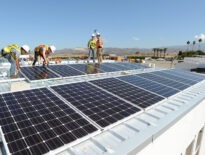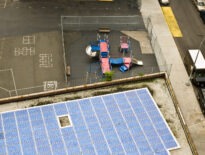For nearly a year, ILSR and a coalition of solar and storage industry partners have been advising staff at the Arizona Corporation Commission on how to create a “nation-leading community solar program” as part of a Commission-ordered working group. On March 7, 2023, the Arizona Corporation Commission adopted a community solar policy statement that takes into account few, if any, stakeholder suggestions. The policy will not spur any community solar development in Arizona.
Read ILSR’s May 2022 letter to the Arizona Corporation Commission.
20 states and the District of Columbia have implemented community solar policies (see ILSR’s Community Power Map). From Colorado in 2010 to California in 2022, there are plenty of opportunities to learn from the successes and shortcomings of earlier adopters. States creating a competitive community solar market (should) know they need 3 pieces:
- Community solar gardens must receive adequate compensation for the services they provide (Minnesota, which has one of the most robust community solar markets, uses a Value of Solar compensation rate).
- A program cap or capacity allocation process that will not arbitrarily restrict the market.
- Codified consideration for the fact that subscribing residential customers and low-income customers requires additional effort.
On this first point, Arizona has already failed. Community solar subscribers will be credited at the utility’s avoided cost — a sub-retail rate that does not take into account the unique benefits of distributed solar. This fluctuating rate also adds a level of uncertainty not seen in successful community solar markets, where community solar gardens sign a multi-year contract for one compensation rate upon interconnection.
Arizona can take some credit for intentionally addressing low-income customer access; at least half of the subscription capacity of each theoretical project must go to low- to moderate-income ratepayers. Developers, however, receive no support to do the additional outreach and subscription management that maintaining this carve-out requires.
Those are not the last of the Arizona policy’s fatal flaws. There are several other components that run contrary to best practice:
- Participating in the program is optional for ALL utilities, including investor-owned utilities.
- Community solar gardens must compete in the RFP (request for proposals) process.
- Once participating, a utility does not have to purchase the electricity from a community solar garden and can curtail its power at any time.
So, in Arizona, a community solar developer would have to compete to build a solar project, have no guarantee that the utility will buy the electricity it generates, and sell the electricity for less than it is worth — all of this assuming that a for-profit utility, which earns the most return when it builds its own power plants, altruistically opts-in to the program.
Compounding uncertainties do not attract investment. The Arizona Corporation Commission reinvented the wheel — and came out with a square. It won’t get rolling anytime soon.
This article originally posted at ilsr.org. For timely updates, follow John Farrell on Twitter or get the Energy Democracy weekly update.
Featured photo credit: iStock





